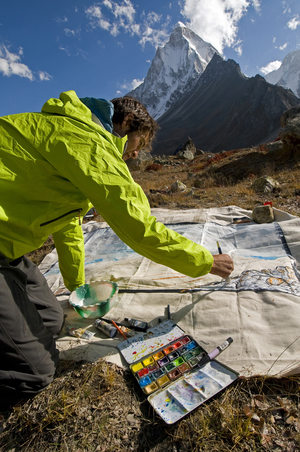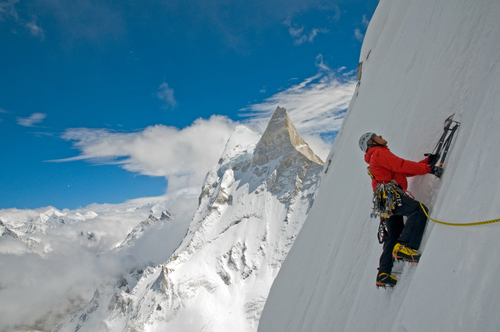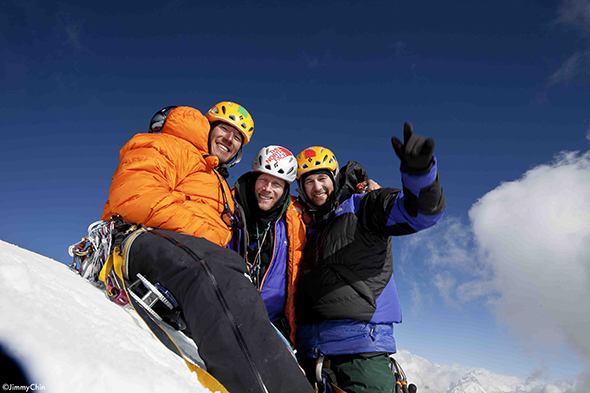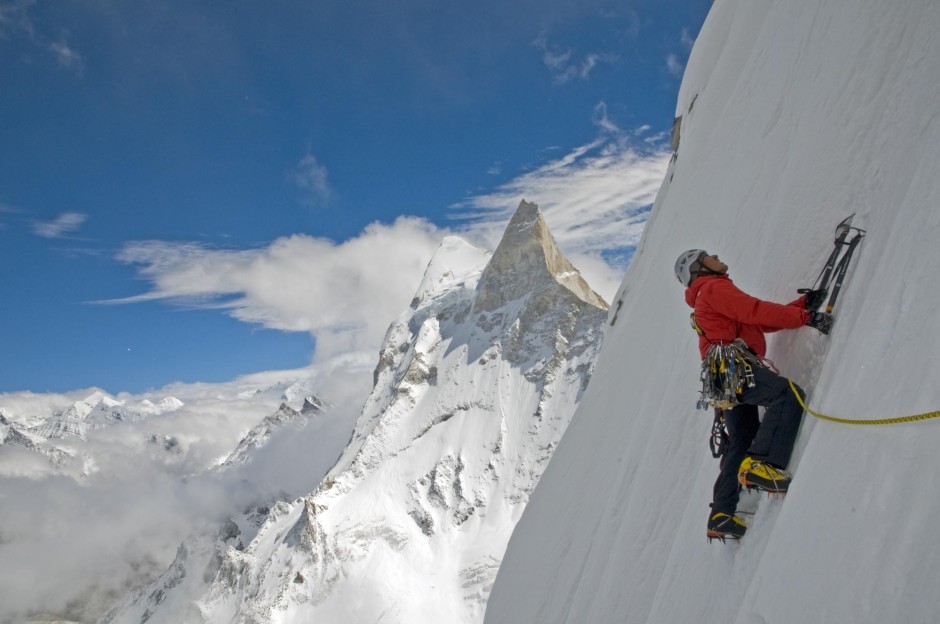
Of all the intimidating mountain peaks in the Himalayas, the most technically complicated and dangerous one may well be Shark’s Fin crowning Mount Meru, which rises to an altitude of 21,850 feet amid spectacular alpine scenery. Towering over the Ganges River in India, it defies the world’s finest climbers. Many have tried to reach the summit, only to be turned back by inclement weather or exhaustion.
Mount Everest, the holy grail of mountaineers, is considerably higher and far more famous, but Mount Meru looms as the more challenging peak because the final section is an implacable, brooding mass of sheer granite, ice and snow. In addition, climbers cannot rely on native porters to carry up their heavy supplies. They must lug their stuff up the mountain themselves.
When three American alpinists — Conrad Anker, Jimmy Chin and Renan Ozturk — set out to scale Mount Meru in 2008, it was still impervious to conquest. Their quest for glory unfolds in Meru, a gripping documentary scheduled to open in Toronto on September 4. Directed by Chin and E. Chai Vasarhelyi, this is a beautifully shot film about friendship, hardship, endurance, resilience and courage.

Anker, one of the finest climbers of his generation, initiated the project. Having been repulsed by the mountain in 2003, he was determined to surmount it. Chin and Ozturk, who are younger and less experienced, shared his dream.
They began their climb on a cold, crisp day, knowing they would be required to exploit their rock and ice climbing techniques to the fullest extent. When they reached an altitude of 16,000 feet, they encountered a vicious storm, forcing them to rig up a hanging cot with a tent over it on a dizzying precipice. They wasted the next four days waiting for the storm to subside, their food running out.
When they resumed the arduous climb, they were dead tired and behind schedule. “We’re just kind of frayed,” said Chin, one of the cinematographers. And their rations had dribbled away.

They made the ascent using ropes, picks and a plethora of special tools. In retrospect, they talked about the mutual trust necessary to make such a climb and the acceptable risks they had to take.
Jon Krakauer, an acclaimed mountaineer and author of Into Thin Air: A Personal Account of the Mt. Everest Disaster, cuts in occasionally with sound observations about Mount Meru, the nature of climbing and the close-knit mountaineering community.
On day 17, they came tantalizingly close to the summit, but could not muster the sufficient strength and stamina to reach the top. “It’s unachievable,” said Anker in a tone of disappointment and resignation.
Anker, however, was hardly defeated. He wanted to try again, despite serious accidents that had befallen Chin and Ozturk in snowboarding. Their friends thought they were crazy. And Anker’s wife, the widow of his late climbing partner, Alex Lowe, was worried that he would never come back from this adventure. Chin had no illusions either. “I felt like we were heading to the gallows,” he said.

On their second attempt of Mount Meru in 2011, Ozturk lapsed into confusion and lethargy, but recovered the following day, much to the relief of Anker and Chin. This part of the film unfolds faster than clips of the 2008 expedition, presumably because viewers are already familiar with the rough terrain and the endless problems.
Suffice it to say, the trio were intent on scaling Shark’s Fin and making mountaineering history. Meru, a movie filled with moments of grandeur, fear and trepidation, encapsulates their hopes and dreams in grand style.
